A Look at How Canucks Defenders Have Fared at Moving the Puck
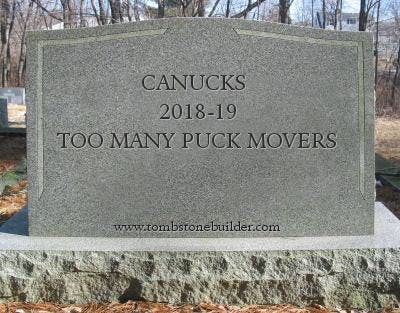
5 years ago
Who among us does not love to post? The libidinal thrill of thoughtless tweeting calls to the extremely online like a siren’s song. Many of us have been driven more than a little insane in the pursuit of likes and retweets, so with that in mind, it is perhaps unfair to judge those of us who get a little carried away.
Still, this was something else:

It’s difficult to ascertain to what degree this sentiment is shared among Canucks fans, but it’s still worth exploring how the Canucks defence has fared in the puck-moving department.
“Puck moving” is a nebulous term at best, and could refer to a few different elements that make up a defender’s game.
One is shot contributions. A player register a shot contribution by either a) taking a shot, or b) making a pass that leads to a shot, also known as a shot assist. Put simply, a player’s shot contributions are the sum total of their shots and shot assists. They aren’t the best measure of puck movement by any means, but they do give us an idea of which defenders are contributing to their team’s offence.
Perhaps even more important are controlled zone entries and exits. The ability to exit the defensive zone or enter the offensive zone with control of the puck is an important element of a team’s offensive and defensive play. Shots generated off of a controlled entry are more likely to result in a scoring chance. By the same token, a defenseman’s primary role is to move the puck out of danger and activate a team’s breakout, both of which are most easily attained by exiting the defensive zone with control. Most importantly for this exercise, a player’s controlled exit and entry percentages are indicative of their propensity for moving the puck out of the d-zone and into the o-zone (either by carrying the puck or passing it) vs. taking the glass-and-out or dump-in approach.
CJ Turtoro’s visualizations are an excellent tool for visualizing microdata, so we’ll take a look at them here. The data is reflected in percentiles, so the higher the number, the more elite company that player is in.
(All data is from the 2017-18 season.)
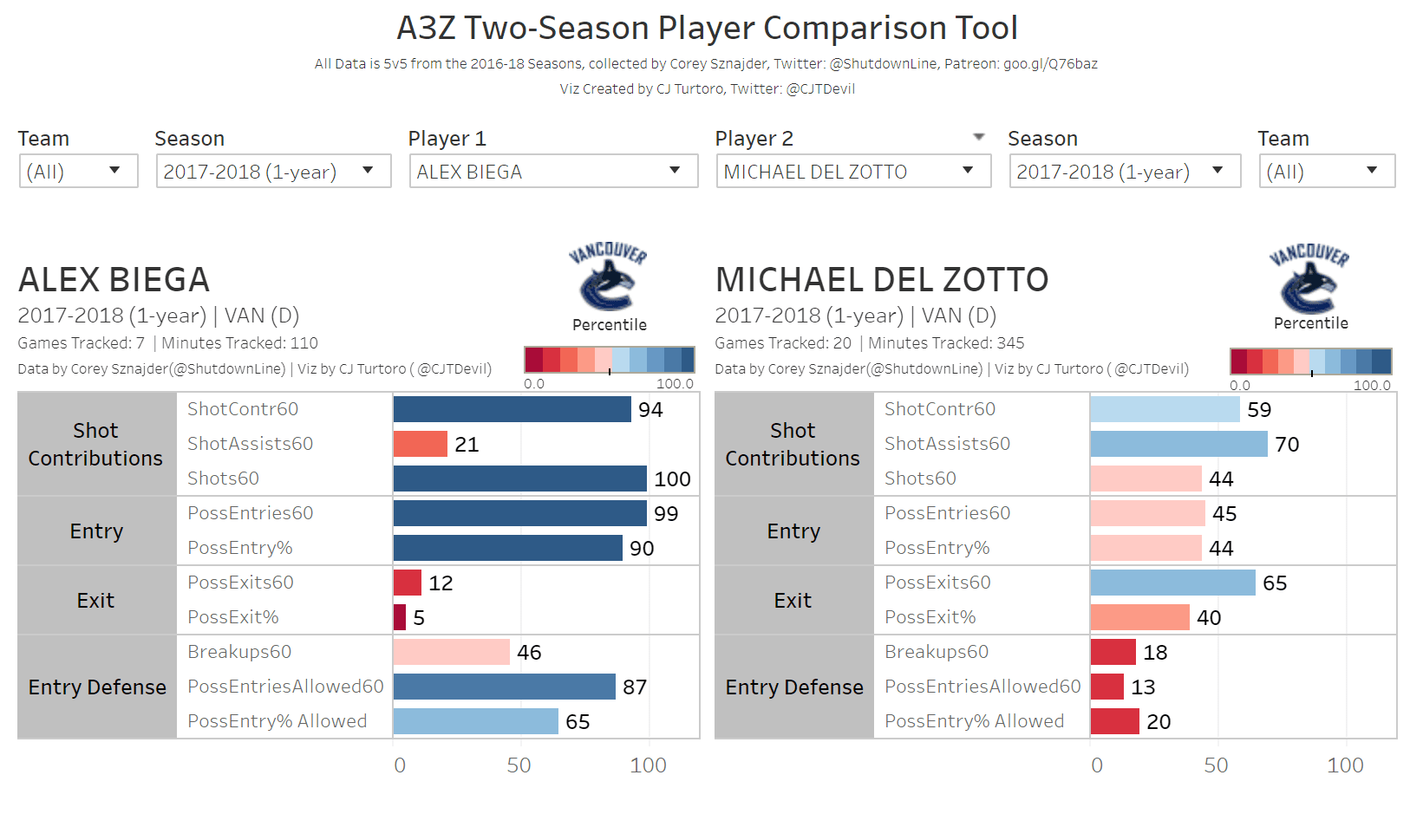
Alex Biega, along with Troy Stecher, was the team’s best player at generating controlled entries by both rate and percentage, but was among the league’s worst at generating controlled exits. Del Zotto’s numbers were middling, although he did generate a decent amount of controlled exits per 60. In terms of shot contributions, Del Zotto produced a fair amount of shot assists, but a low number of shots in contrast to Biega, who produced an obscenely high level shots but few shot assists.
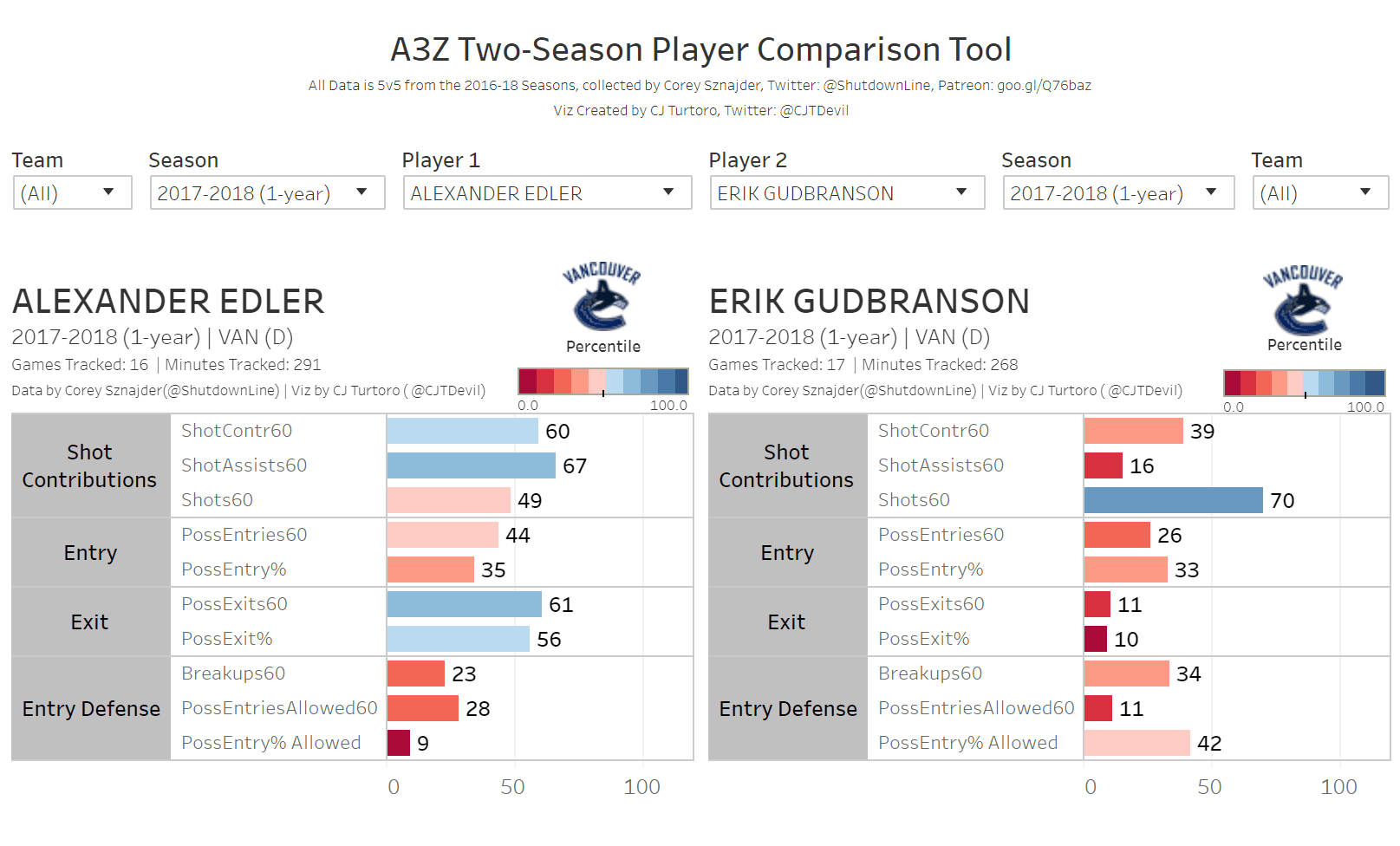
Alex Edler’s underlying numbers have taken a hit across the board as he’s aged, and his entry and exit rates are no different: a bit above average on the breakout, a bit below when entering the offensive zone; with his raw per 60 totals looking better than his exit and entry percentages. He still finished the season above league-average in shot contributions, but his status as far and away the team’s most utilized defender likely isn’t helping him at this stage in his career.
As one might expect, Gudbranson’s totals are low across the board.
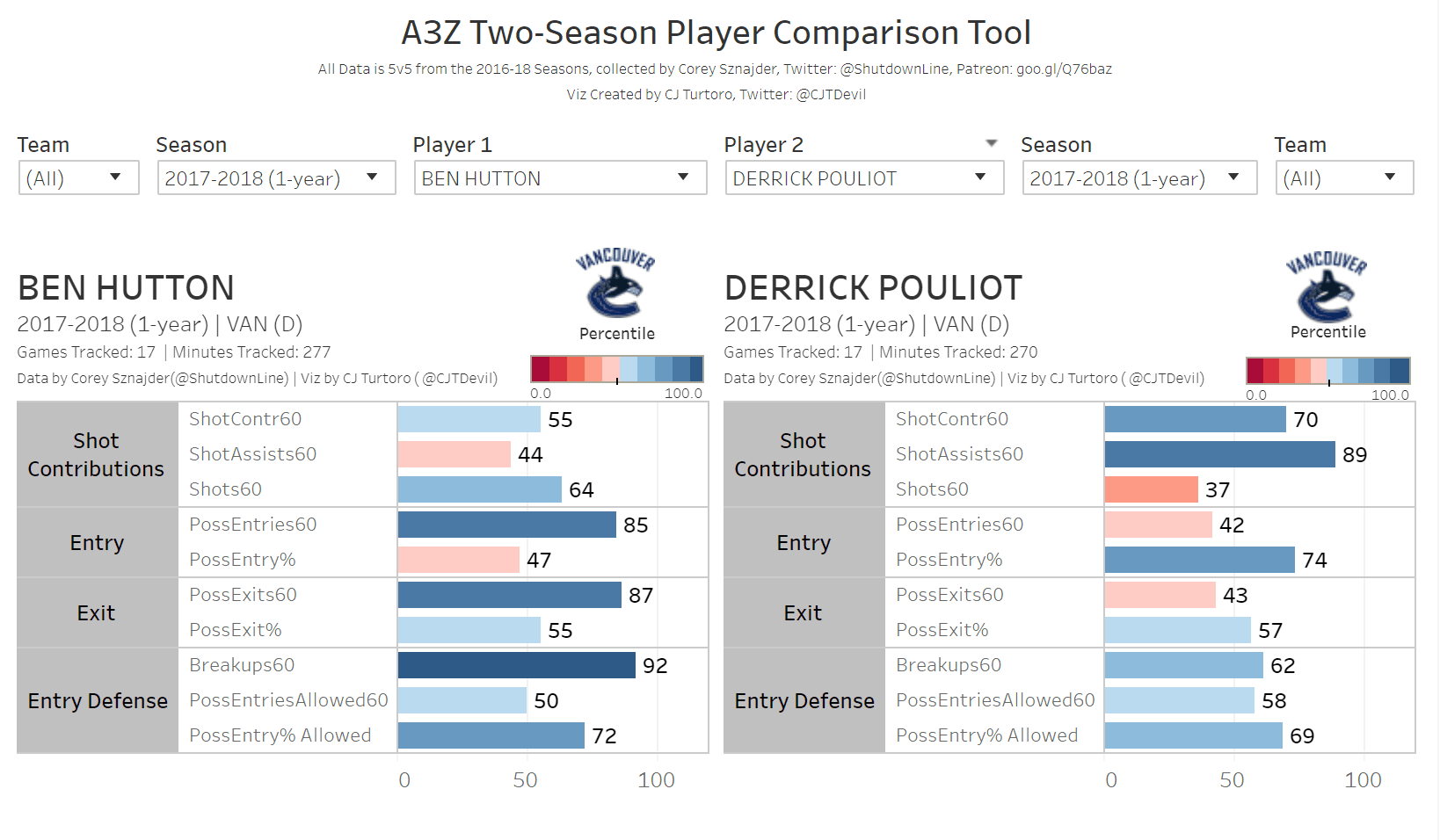
Hutton’s puck-moving skills look pretty respectable here, although the percentage of controlled entries and exits lags behind his per 60 totals. In contrast, Derrick Pouliot has shown a preference for entering and exiting with control, but his per 60 totals were lower than one might expect from a player of his reputation.
(As a side note, Ben Hutton’s numbers indicate that he’s an extremely misunderstood player. Despite being billed as an offensive defenseman, Hutton was a below-average defender in terms of shot assists, but was the team’s most adept defender with regards to preventing controlled zone entries.)
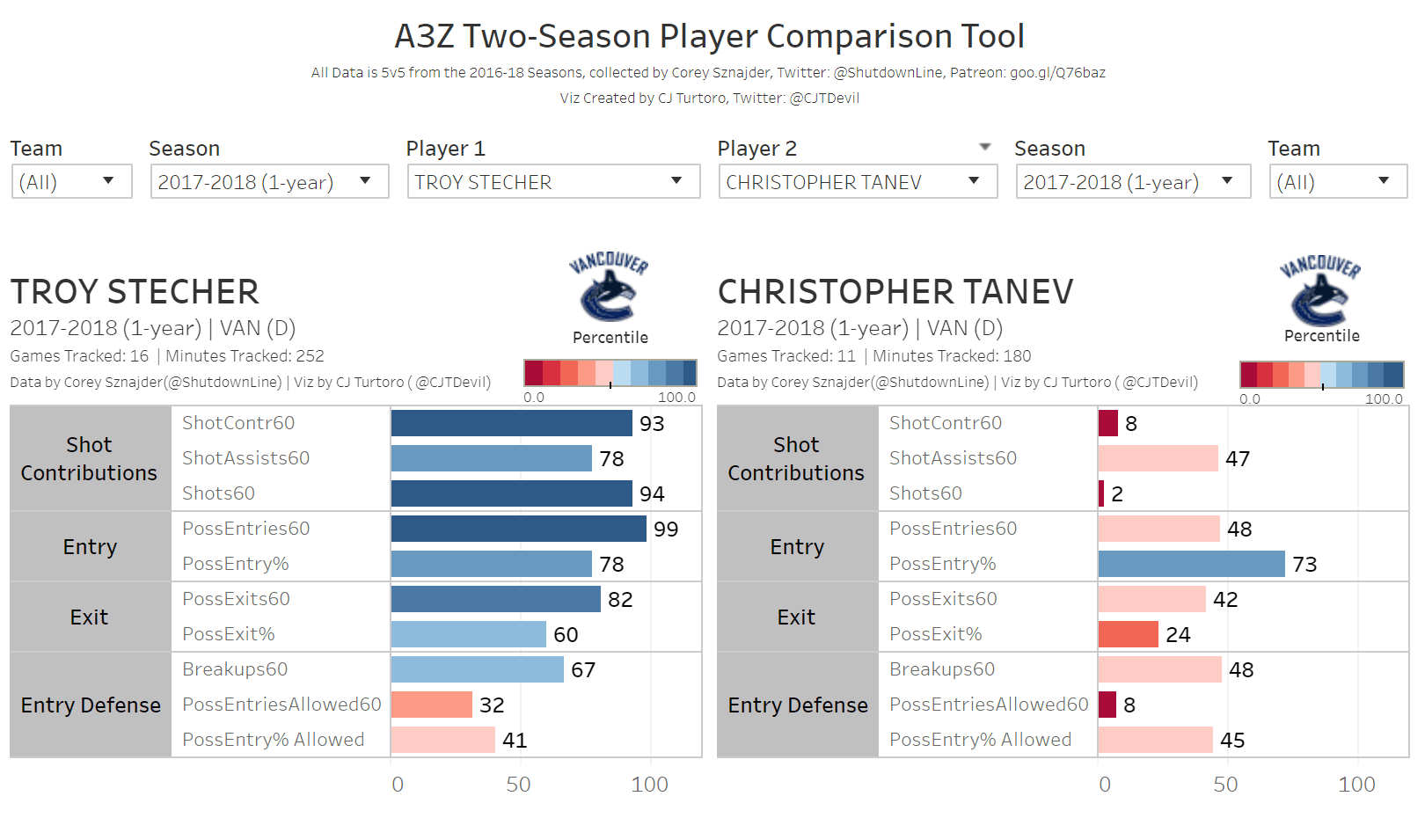
Perhaps unsurprisingly, Stecher looks great by these metrics no matter which way you slice it. He was a high-end shot contributor last season, and was also one of the league’s best defensemen by both controlled exits and entries, and did so largely without turning the puck over.
Chris Tanev had previously been one of the league’s more adept defenders at exiting the zone with control, but his numbers took a dip last season in every area other than his controlled entry percentage. This was likely due to changes in the Canucks’ system under Travis Green, as well as his struggles with injury.
If we use these metrics as an indicator of puck movement, it appears that the Canucks’ only player to consistently move the puck at a high level across the board was Troy Stecher. Alex Edler, Alex Biega, Ben Hutton, Derrick Pouliot, and Michael Del Zotto did well in some areas but struggled in others, while Erik Gudbranson and Chris Tanev looked like below average defenders in most categories connected to puck movement. Interestingly, the Canucks worst defenders at moving the puck last season were also their worst at blocking opponents from entering their zone, which throws cold water on the notion that puck movement somehow contributes negatively to defensive play.
It’s difficult to know how much the players’ zone exit and entry numbers are influenced by the Canucks system, but one thing should be clear: moving the puck is far from a strength for this defence. Sure, they’ve had more than their fare share of trouble shutting down their opposition’s best forwards, but being a shutdown defender and being a puck-moving defender aren’t mutually exclusive. If anything, an inability to skate or pass the puck out of the zone makes playing a shutdown role that much more difficult. The Canucks don’t need less puck movers. They just need better ones. There’s a distinct difference.





